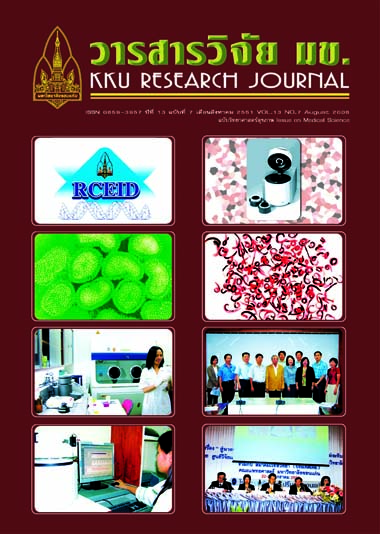Evaluation of motor developmental stimulation program given to parents of very low birth weight infants: A pilot study (Thai)
Main Article Content
Abstract
Our study is designed to evaluate a pattern for a motor development stimulation program provided to
parents of VLBW infants. Ten parents participated in this study. These parents were trained to use the development program by a physical therapist one by one for 30 minutes prior to discharge. A poster was used as a teaching medium and given to parents to practice at home. These parents were evaluated for their technique twice at 3 and 6 months after discharge. At the first evaluation, parents who were able to perform the test adequately
were 100% and 90% for position 1 and position 2 respectively. After that parents were trained to practice an
additional three positions from the poster for 15 minutes. The percentage of parents who practiced correctly at
the second visit decreased to 25, 35 and 67.5% in positions 3, 4 and 5 respectively. Results also showed that
support from family members affected opportunity to practice this program with the babies. The quality of the
poster used in this study was satisfactory with some suggestions about increasing size of the letters. The high
percentage of adequate performance at the first visit may suggest the benefit of practicing one by one with a
physical therapist at an inpatient ward. The result may be explained in terms of differences in environment and
spare time when practicing between an in patient ward and an out patient department. Due to small sample size further study is important to confirm the results of this study.
Article Details
How to Cite
Mackawan, S., & Jenjaiwit, P. (2017). Evaluation of motor developmental stimulation program given to parents of very low birth weight infants: A pilot study (Thai). Asia-Pacific Journal of Science and Technology, 13(7), 784–796. Retrieved from https://so01.tci-thaijo.org/index.php/APST/article/view/83625
Section
Research Articles
References
-

